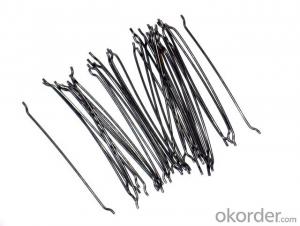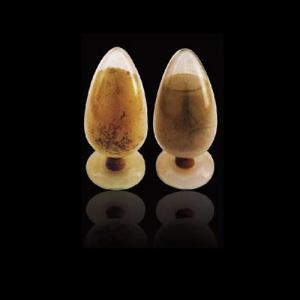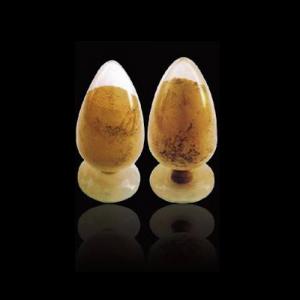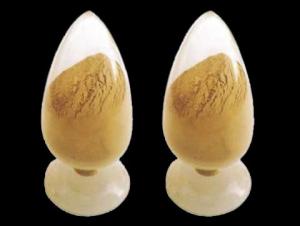Calcined Petroleum Coke 1-3mm FC:98.5%min
- Loading Port:
- Shekou
- Payment Terms:
- TT OR LC
- Min Order Qty:
- 20 m.t
- Supply Capability:
- 1000 m.t/month
OKorder Service Pledge
OKorder Financial Service
You Might Also Like
Factory Background
The factory is majorly running and operating carbon additive (pitch coke, calcined petroleum coke and anthracite), low nitrogen carbon additive, and brake pad making material. Company is the long term supplier of Sinosteel Corporation, Shanghai Carbon Corporation, the plant of SGL Group the Carbon Company in China and some largest special carbon products producing plants.
YUAI also supplies huge amout of high quality carbon additive and graphite carbon additive to steel plants, foundries and ferrotungsten plants. YUAI has been assigned by BAO STEEL as the only organization for processing pitch coke for export purpose. The group’s major products are constantly exported to Japan, Korea, Malaysia, South East Asia countries, Europe and America, which receive praises by our consumers.
The group has invested numbers of calcinators in Anhui China to ensure the capability of producing and processing huge amount of carbon additive. Further investment is on process. According to the orders from customers, YUAI is able to processing and providing different specifications of carbon additive and other products. To provide best quality of products and to offer customers most satisfied service is YUAI’s operating objectives.
Calcined Petroleum Coke
FC:98.5%min,
S:0.5%max
A:0.8%max
V:0.7%max
Mositure:0.5%max
Size:1-5mm
This product is mainly used in steel-making and foundry. Calcined Petroleum Coke
Calcined Petroleum Coke comes from delayed coke which extracted from oil refinery. Although Calcined Petroleum Coke contains a little bit higher level of sulfur and nitrogen than pitch coke, the price advantage still makes it widely used during steel-making and founding as a kind of carbon additive/carburant.
Packaging & Delivery
Packaging Detail:25kg paper bag into 1t weaving bag 5kg, 10kg and 20kg weaving bag into 1t weaving bag 25kg weaving bag put on pallet covered with entanglement wrap product direct into packing bag 25kg paper bag put on pallet covered with entanglement Wrap 25kg weaving bag into 1t weaving bag.
Delivery Details: 7 days
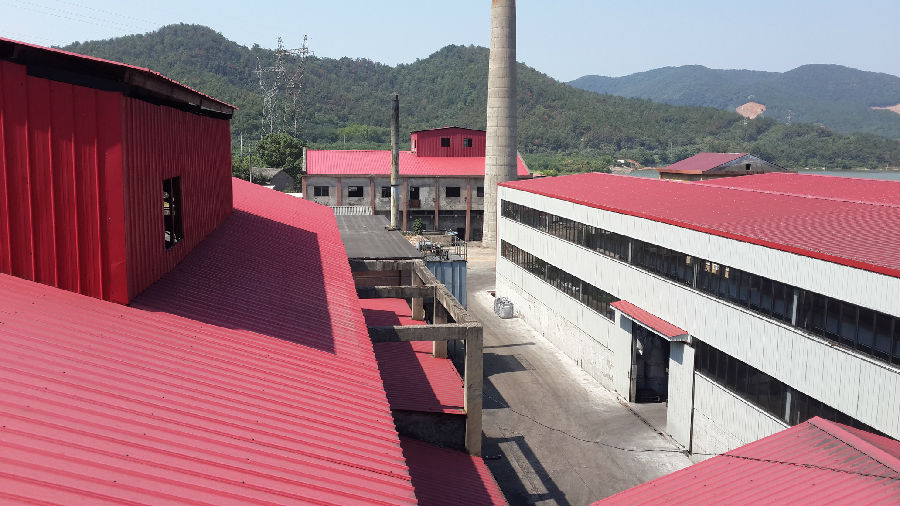

- Q:How long is the lifespan of monolithic refractories in iron and steel applications?
- The lifespan of monolithic refractories in iron and steel applications can vary depending on several factors. These factors include the type of refractory material used, the specific application, the operational conditions, and the maintenance practices implemented. In general, monolithic refractories used in iron and steel applications are designed to withstand high temperatures, thermal shock, chemical attack, and mechanical stress. They are expected to have a relatively long lifespan compared to other refractory materials. Under normal operating conditions and proper maintenance, monolithic refractories can typically last anywhere from several months to several years in iron and steel applications. However, it is important to note that certain areas of the application may experience more severe conditions and may require more frequent repairs or replacements. Regular inspections and monitoring of the refractories' condition are crucial to identify any signs of deterioration or damage. Any necessary repairs or replacements should be carried out promptly to prevent further damage and minimize downtime. It is also worth mentioning that advancements in refractory technology and materials have led to the development of more durable and long-lasting monolithic refractories. These advancements have increased the lifespan of refractories in iron and steel applications, ultimately improving the overall efficiency and productivity of the operations.
- Q:How do monolithic refractories improve the efficiency of ladle and tundish purging furnaces?
- Monolithic refractories improve the efficiency of ladle and tundish purging furnaces by providing better insulation, reducing heat loss, and enhancing the overall thermal efficiency of the furnaces. These refractories have high thermal conductivity and low thermal expansion, allowing for better heat transfer and uniform temperature distribution. Additionally, their superior resistance to thermal shocks and chemical attacks prolongs the lifespan of the furnaces, reducing maintenance and downtime.
- Q:What are the key properties and characteristics of monolithic refractories?
- Monolithic refractories are a type of refractory material that are known for their ability to be shaped or installed in a single piece or without joints. These materials are typically used in high-temperature applications where traditional brick or tile refractories may not be suitable. One key property of monolithic refractories is their excellent thermal stability. They can withstand extreme temperatures without undergoing significant expansion or contraction, making them ideal for use in furnaces, kilns, and other heat-intensive environments. This property allows monolithic refractories to maintain their structural integrity and provide long-lasting performance. Another important characteristic of monolithic refractories is their high resistance to thermal shock. They can withstand rapid temperature changes without cracking or spalling, which is crucial in applications where the refractory material is exposed to alternating hot and cold conditions. This resistance to thermal shock ensures the longevity of the refractory lining and reduces the need for frequent repairs or replacements. Monolithic refractories also exhibit good mechanical strength, which enables them to withstand the mechanical stresses and loads imposed on them during use. They possess excellent load-bearing capacity and can resist abrasion, erosion, and impact, making them suitable for applications where the refractory material is subjected to mechanical wear or impact. Furthermore, monolithic refractories have the advantage of being easily installed and repaired. Unlike traditional refractories that require skilled labor and time-consuming bricklaying techniques, monolithic refractories can be cast, gunned, or sprayed into place. This ease of installation allows for faster turnaround times and reduces downtime during repairs or maintenance. Lastly, monolithic refractories offer good chemical resistance to various corrosive agents, such as acids, alkalis, and molten metals. This property makes them suitable for use in industries where the refractory material is exposed to aggressive chemical environments, such as the steel, petrochemical, and glass industries. In summary, the key properties and characteristics of monolithic refractories include excellent thermal stability, high resistance to thermal shock, good mechanical strength, easy installation and repair, and good chemical resistance. These properties make them a preferred choice in high-temperature applications where durability, reliability, and performance are of utmost importance.
- Q:How do monolithic refractories help in improving the quality of iron and steel products?
- Monolithic refractories play a crucial role in improving the quality of iron and steel products by providing excellent thermal insulation, erosion resistance, and thermal shock resistance. These refractories are capable of withstanding extremely high temperatures in the metal production process, ensuring consistent heat distribution and minimizing heat loss. Additionally, their erosion resistance helps maintain the integrity of the furnace lining, preventing contamination and impurities from entering the molten metal. By providing enhanced thermal properties and durability, monolithic refractories contribute to producing iron and steel products of superior quality, meeting industry standards and customer requirements.
- Q:How are monolithic refractories used in the iron and steel industry?
- Due to their exceptional performance and versatility, monolithic refractories are widely utilized in various applications within the iron and steel industry. Composed of a uniform material, these refractories serve as seamless linings in high-temperature environments. In the iron and steel industry, the significance of monolithic refractories cannot be overstated as they play a crucial role in multiple stages of the manufacturing process. A primary application is seen in the blast furnace, where the inside of the furnace is lined with monolithic refractories. This lining is exposed to exceedingly high temperatures and harsh chemical reactions. By providing excellent thermal insulation and resistance to chemical attack, monolithic refractories ensure the durability and longevity of the blast furnace. Another crucial application is witnessed in the steelmaking process, where monolithic refractories are used to line the ladles and tundish, utilized for transporting and pouring molten steel. These refractories are specially designed to withstand the corrosive nature and high temperatures of the molten steel, thus preventing contamination and guaranteeing the quality of the final product. Furthermore, monolithic refractories find application in various ancillary equipment and structures within the iron and steel industry. They are employed in furnaces, kilns, and other heat treatment systems to provide insulation and maintain high-temperature conditions. Additionally, they are used in the construction of chimneys, exhaust ducts, and other exhaust systems, where they offer thermal insulation and resistance against corrosive gases. Overall, the vital role played by monolithic refractories in the iron and steel industry lies in their ability to provide high-temperature insulation, chemical resistance, and durability. They optimize the production process, enhance energy efficiency, and ensure the quality of the final product. With their exceptional performance and versatility, monolithic refractories have become an indispensable component within the iron and steel manufacturing industry.
- Q:How do monolithic refractories perform in blast furnace taphole applications?
- Monolithic refractories perform excellently in blast furnace taphole applications due to their high thermal resistance, mechanical strength, and resistance to chemical attack. They are able to withstand the extreme temperatures and abrasive conditions of the blast furnace discharge, ensuring reliable and efficient operation of the taphole. Additionally, monolithic refractories offer easy installation and maintenance, reducing downtime and improving overall productivity in the blast furnace.
- Q:What are the specific requirements of monolithic refractories for ladle purging applications?
- The specific requirements of monolithic refractories for ladle purging applications include high thermal shock resistance, excellent erosion resistance, good slag resistance, and low porosity. Thermal shock resistance is crucial in ladle purging applications as the refractory material needs to withstand rapid temperature changes without cracking or spalling. This is particularly important during ladle purging, where the ladle is exposed to high temperatures during molten metal pouring and then quickly cooled down during purging. Erosion resistance is another important requirement for monolithic refractories in ladle purging applications. The refractory material should be able to withstand the erosive action of molten metal streams and metalloids during purging. It should have a high resistance to chemical attack, preventing the material from deteriorating or eroding away. Slag resistance is also necessary for monolithic refractories used in ladle purging. The refractory material should have good resistance to the corrosive effects of slag, which can be present in ladles during purging. Slag can cause chemical reactions that can degrade the refractory material, leading to premature failure. Low porosity is an essential requirement for monolithic refractories in ladle purging applications. Low porosity ensures that the refractory material is impermeable to molten metal, preventing it from infiltrating the material and causing damage. This also helps to maintain the integrity and performance of the refractory lining during ladle purging. Overall, monolithic refractories for ladle purging applications need to exhibit high thermal shock resistance, excellent erosion resistance, good slag resistance, and low porosity to ensure the durability and longevity of the refractory lining in ladles during purging operations.
- Q:What are the recommended installation techniques for monolithic refractories?
- The recommended installation techniques for monolithic refractories typically involve proper surface preparation, mixing of refractory materials, and precise application. It is crucial to clean and remove any loose debris from the substrate before installation. The refractory materials should be mixed thoroughly with the appropriate water content to achieve the desired consistency. It is recommended to use vibration or tamping techniques during application to remove air pockets and ensure proper compaction. Careful curing and drying processes should be followed to prevent thermal shock and achieve optimal performance.
- Q:How do monolithic refractories withstand high temperatures in iron and steel production?
- Monolithic refractories are specially designed to withstand the high temperatures encountered in iron and steel production. These refractories are made from a single piece or a single material, unlike traditional brick refractories that are made by laying bricks one by one. The ability of monolithic refractories to withstand high temperatures is due to their unique composition and structure. They are made from high-quality raw materials such as alumina, magnesia, silica, and carbon, which have high melting points and excellent heat resistance. The monolithic refractory is typically mixed with a binder, such as clay or cement, to give it shape and strength. This binder helps to hold the refractory particles together and provides the necessary structure to withstand thermal stresses. Additionally, various additives and additives can be included in the mix to further enhance the refractory properties. During iron and steel production, the monolithic refractories are exposed to extreme temperatures, rapid heating, and cooling cycles, as well as chemical reactions with molten metals and slag. However, the unique composition and structure of monolithic refractories enable them to endure these harsh conditions. The high melting point materials used in monolithic refractories prevent them from melting or deforming under the intense heat of iron and steel production. These materials have excellent thermal conductivity, allowing them to effectively transfer heat away from the hot surfaces, thus preventing overheating and damage. Furthermore, the binders and additives in monolithic refractories help to increase their resistance to thermal shock, which occurs when there is a rapid change in temperature. This resistance is crucial in iron and steel production since the refractories are frequently exposed to extreme temperature differentials. Lastly, the monolithic nature of these refractories eliminates the joints and gaps found in traditional brick refractories. The absence of joints minimizes the risk of heat leakage and infiltration of molten metal or slag, ensuring a more efficient and durable lining. In conclusion, monolithic refractories are specifically designed to withstand the high temperatures encountered in iron and steel production. Their composition, structure, and unique properties enable them to endure extreme heat, rapid temperature changes, chemical reactions, and thermal stresses, making them essential components in the manufacturing of iron and steel.
- Q:How are monolithic refractories different from traditional refractory bricks?
- Monolithic refractories refer to a type of refractory material that is composed of a single, homogeneous structure, as opposed to traditional refractory bricks which are made by binding individual bricks together. This fundamental difference in structure leads to several distinctions between monolithic refractories and traditional refractory bricks. Firstly, monolithic refractories offer greater flexibility and versatility in terms of shape and installation. Since they are not bound by individual bricks, monolithic refractories can be easily molded and shaped to fit specific applications and complex geometries. This makes them ideal for lining various types of furnaces, kilns, and other high-temperature equipment. Secondly, monolithic refractories typically have superior thermal shock resistance compared to traditional refractory bricks. Their uniform structure allows for better distribution of heat, minimizing the risk of thermal stress and cracking. This characteristic makes monolithic refractories particularly suitable for applications with rapid temperature fluctuations or severe thermal cycling. Additionally, monolithic refractories often exhibit better overall performance in terms of strength, mechanical properties, and resistance to chemical attack. The absence of joints and seams in monolithic refractories eliminates potential weak points, resulting in a more durable and reliable lining. Moreover, the homogeneous structure of monolithic refractories provides better resistance to corrosive agents, ensuring prolonged service life in harsh environments. Lastly, monolithic refractories offer advantages in terms of installation and maintenance. Their monolithic nature simplifies the installation process, reducing labor and time requirements. Additionally, repairs and maintenance of monolithic refractories can be carried out more easily and cost-effectively compared to traditional refractory bricks, which may require the replacement of entire sections or bricks. In summary, monolithic refractories differ from traditional refractory bricks in their structure, flexibility, thermal shock resistance, performance, and installation characteristics. These differences make monolithic refractories a preferred choice in many high-temperature applications, offering improved efficiency, durability, and ease of use.
1. Manufacturer Overview |
|
|---|---|
| Location | |
| Year Established | |
| Annual Output Value | |
| Main Markets | |
| Company Certifications | |
2. Manufacturer Certificates |
|
|---|---|
| a) Certification Name | |
| Range | |
| Reference | |
| Validity Period | |
3. Manufacturer Capability |
|
|---|---|
| a)Trade Capacity | |
| Nearest Port | |
| Export Percentage | |
| No.of Employees in Trade Department | |
| Language Spoken: | |
| b)Factory Information | |
| Factory Size: | |
| No. of Production Lines | |
| Contract Manufacturing | |
| Product Price Range | |
Send your message to us
Calcined Petroleum Coke 1-3mm FC:98.5%min
- Loading Port:
- Shekou
- Payment Terms:
- TT OR LC
- Min Order Qty:
- 20 m.t
- Supply Capability:
- 1000 m.t/month
OKorder Service Pledge
OKorder Financial Service
Similar products
New products
Hot products
Hot Searches
Related keywords









